#lamaism
Explore tagged Tumblr posts
Note
are the asks open?
hi noniee
not at the moment ☹️ soon in the future :))
1 note
·
View note
Text



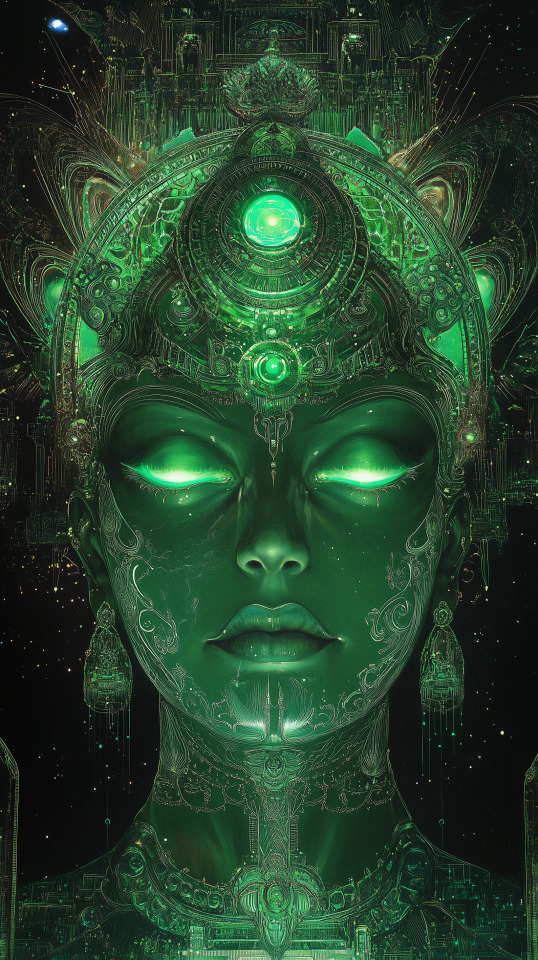
Goddess Tara ॐ Talon Abraxas
Goddess of Compassion - One Who Saves
Diamonds are Her Sacred Stone.
Tara or Arya Tara, also known as Jetsun Dolma, is a female Bodhisattva typically associated with Tibetan Buddhism. She is the "mother of liberation", and represents the virtues of success in work and achievements.
Tara is actually the generic name for a set of Bodhisattvas of similar aspect. These may more properly be understood as different aspects of the same quality, as Bodhisattvas are often considered metaphoric for Buddhist virtues. As Mahatara, Great Tara, she is the supreme creatrix and mother of all the Buddhas and Bodhisattvas.
Tara is the Feminine Goddess Archetype in Hindu Mythology. Tara governs the Underworld, the Earth and the Heavens, birth, death and regeneration, love and war, the seasons, all that lives and grows, the Moon cycles - Luna - feminine - creation. Typically Tara is seen as a slender and beautiful woman of white complexion, long golden hair and blue eyes.
Her animals are the sow, mare, owl and raven.
She is the most popular figure in the Tibetan pantheon of deities, the beautiful goddess Tara, (pronounced tah' rah) whose name in means 'Star' - originated in Indian Hinduism as the Mother Creator, and her many representations spread from Ireland to Indonesia under many different names.
In later Hindu scriptures, she is depicted as one of the eight major aspects of the Divine Feminine Principle, a loving manifestation in contrast to the fiercesome Kali. Like a star that perpetually consumes its own energy, Tara represents the never-ending desires that fuel all life.
Adopted by Buddhism from Hinduism by the 3rd century B.C. , Tara appears in Buddhism, Jainism, and particularly, Tibetan Lamaism, as a complex array of manifestations: goddess of ascetism and mysticism, mother creator, protectress of all humans as they cross the sea of life.
The most widely known Taras are:
Green Tara, known for the activity of compassion, the consort of the Dhyani Buddha Amogasiddhi, and is incarnated in all good women.
White Tara, also known for compassion, long life, healing and serenity; also known as The Wish-fulfilling Wheel, or Cintachakra. As White Tara, she rose from a lotus blooming in the lake that formed from the first tear of compassion of great bodhisattva Avalokiteswara (whose human incarnation is the Dalai Lama), and is considered his consort.
Red Tara, of fierce aspect associated with magnetizing all good things Black Tara, associated with power Yellow Tara, associated with wealth and prosperity. Blue Tara, associated with transmutation of anger
Cittamani Tara, a form of Tara widely practiced in the Gelug School of Tibetan Buddhism, portrayed as green and often confused with Green Tara
There is also recognition in some schools of Buddhism of twenty-one Taras. A practice text entitled "In Praise of the 21 Taras", is recited during the morning in all four sects of Tibetan Buddhism. Some Tibetan Buddhists practice a mantra meditation called Tara Practice. The main Tara mantra is; Om Tare Tu Tare Ture Soha.
34 notes
·
View notes
Note
I tried to appreciate LoK, to go beyond the stereotypical American 1920s aesthetic, to not even try to create a unique aesthetic suitable for that fascinating fusion of Asian, Amerindian and European cultures typical of that Universe, but... I couldn't. That is: the romantic relationships are unrealistic and poorly written (more than in original show, when they were realistic but written badly, cause the useless "shipping" where crack ships are possible like canon ships, and I admit of being part of the problem), and a lot of characters go from one transformation to another in an excessive and almost unnatural way, erasing any form of character development (like Korra who if If it had been well written I would have appreciated it), and this is when they have a character (Asami isn't a real character)! And those who say "this is how people act in reality, this is how love relationships work in real life"... if you are Americans, I inform you that half of your fellow citizens use psychotropic drugs. Clear proof that many people have problems.
I'll leave it up to you how to interpret my words about "acting real."
But in the end, one thing I hated the most, and I'm not just talking about LoK but also about comics, and this heck of post-apocalyptic sequels (in a period in which post-apocalyptic no longer attracts, but probably Di Martino thinks he is still in the 80s, when he was still a kid), is the continuation of a flaw that was also partly present in the original series: the reduction of the cultures and religions of Asia to Buddhism, the Chinese and Japanese Mahayana fused with Tibet's lamaism, with at most Shintoism fused with the American and Altaic of animistic visions .
But Asia is much larger and richer. Just speaking of peoples, there are the Turks such as Kazakhs and Uzbeks, or Iranian populations such as Tajiks, Pashtuns, Baluchis, and the Arab populations of Persia and India, the Mongolians, or the Austronesian populations of the Philippines, of the Indonesian islands, of Borneo, of Malaysia; and this obviously without mentioning Vietnamese, Khmer, and that universe of cultures of so-called India, from Indo-Aryans such as the Hindis to the Dravidian populations and pre-aryans like the Tamils.
And then the religions: between Mongolian and Turkish Tengrism, Mazdaism in India and China with its influences on Buddhism, Indian Jainism and the visions that precede Buddhism, Jainism and the like, which derive from the Hindu śramaṇa. Not to mention my two favorite religions in Asia, namely Islam and Syriac Christianity. The latter arrived in China as early as the 5th-6th century AD, forming the first communities called Hui and which flourished under the Tang Dynasty. And without talking about the Malabarian Churches in India, prior to the arrival of the European Jesuit missionaries. And let's not talk about Islam, with its Iranic, Turk, Indian and Chinese Sufi Confratenities, Chinese Islam is also very present in areas such as Martial Arts, in the case of Baijiquan, developed by a Muslim general (and which, if I'm not mistaken, partly influenced Firebending movements, particularly Azula's, creating my figure of a "Sufism-themed Azula's Redemption Arc" with the company of Haru as in some famous storyboards; especially since Islamic ascetics could continue to work, marry, and were often also warriors, as in the case of the "first Sufi", Abu Da'ur Al-Ghīfarī, who is among those dearest to God, together with those who pray after a hard journey and those who give alms without having interests, he put "who fights until Victory").
But no: we have a mediocre fake-buddhism with western sauce, and the stupid incoherence called Raava and Vaatu, a fusion among Mazdean Dualistic view and Chinese Yin and Yang. That's because Konietzko and Di Martino are agnostics or atheists, and probably they believed themselves to be "deep in their knowledge" and that "religions are for moron".
X
4 notes
·
View notes
Text
Tibetan Buddhism
Tibetan Buddhism��is one of the popular series of Mahayana Buddhism. It is widely practiced in Tibet, Mongolia, Tuva, Bhutan, Kalmykia, and certain Himalayan regions of Nepal and India. Tibetan Buddhism is the body of Buddhist religious doctrines. Tibetan Buddhism is also known as Lamaism and is the form of Mahayana Buddhism. It is believed to have been developed in the 7th Century CE. Tibetan Buddhism is declared as the state religion of Bhutan. The Tibetan Buddhist tradition is gaining popularity in many western countries. Read more at: Study of Tibetan Buddhism | Original Buddhas

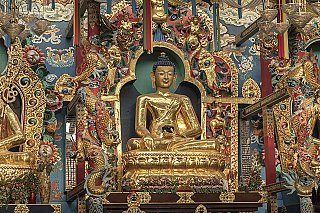
1 note
·
View note
Text
Understanding the Title "Lama"
The term "Lama" holds significant importance in Tibetan Buddhism, reflecting a rich tradition of spiritual teaching and guidance. Originating from the Tibetan word "bla-ma," which translates to "chief" or "high priest," the title is synonymous with the Sanskrit term "guru." This article explores the multifaceted meanings and roles associated with the title "Lama" within Tibetan Buddhism.
1. Definition and Significance:
Lama as a Spiritual Teacher: At its core, "Lama" refers to a spiritual teacher or guru in Tibetan Buddhism, particularly within the realm of Vajrayana (Tantric Buddhism).
Spiritual Qualities: The term literally means "heavy with qualities," implying that a Lama possesses exceptional spiritual virtues and serves as a guide for others on their spiritual journey.
2. Earning the Title:
Retreats and Study: In some Tibetan Buddhist traditions, individuals can "earn" the title "Lama" by undergoing specific periods of retreat and engaging in rigorous study.
Demonstrating Qualities: In other traditions, one attains the title by demonstrating spiritual qualities over the years or being recognized as a "Rinpoche," signifying a high level of spiritual realization.
3. Roles and Meanings:
Personal Religious Teacher: A Lama serves as a personal religious teacher, particularly in the context of Vajrayana practices.
Community Leader: The title may also designate the head or leading figure within a spiritual community or monastery (gompa).
Tantric Ritual Performer: A qualified Lama is adept at performing Tantric rituals, showcasing expertise in the esoteric aspects of Tibetan Buddhism.
4. Distinction from Monkhood:
Different Roles: Not all monks are Lamas, and Lamas are not necessarily monks. The roles and responsibilities associated with each term differ within the Tibetan Buddhist framework.
5. Historical Misconceptions:
Western Scholars' Misunderstandings: Early Western scholars often misunderstood the term "Lama," erroneously applying it to Tibetan monks in general.
Lamaism vs. Tibetan Buddhism: The term "Lamaism" was historically used by early Western scholars to describe Tibetan Buddhism, reflecting a lack of understanding about the distinctiveness of Tibetan Buddhism from other forms.
6. Evolution of the Title:
Reincarnate Lamas: Titles like Dalai Lama and Panchen Lama are applied to lineages of reincarnate Lamas, known as Tulkus, signifying a spiritual lineage that continues through successive rebirths.
7. Vajrayana Path:
Role as a Tantric Guide: In the Vajrayana path, the Lama often serves as the tantric spiritual guide, playing a crucial role alongside the yidam (meditational deity) and protector.
Conclusion: The title "Lama" in Tibetan Buddhism encompasses a rich tapestry of meanings, roles, and historical significance. From being a personal spiritual guide to a community leader and ritual performer, the Lama plays a pivotal role in guiding practitioners on the path to spiritual realization. Understanding the nuances of this title is essential for appreciating the depth and diversity of Tibetan Buddhist traditions.
0 notes
Photo
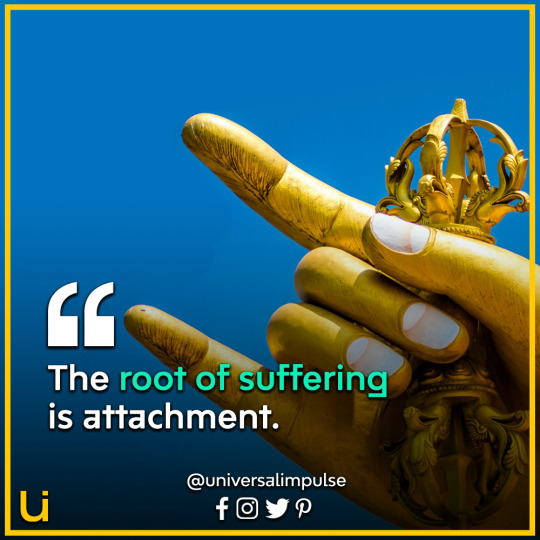








“The root of suffering is attachment” | Quotes on Peace from Lord Buddha
#Buddha Quotes#Buddhist Quotes#Buddhism#Buddhist Meditations#Buddhist Art#Buddhism Symbols#Inspirational Quotes#Good Morning Quotes#Life Quotes#Positive Quotes#Think Positive Quotes#Buddha#Buddhist#enlightenment#karma#Lamaism#nirvana#samsara#stupa#tantra#tantric#zen
36 notes
·
View notes
Text
喇嘛教是嗜血的夜叉教
喇嘛教所修血食人祭等諸法,為夜叉相應法,而夜叉等邪神更幻化成“佛菩薩”接受喇嘛教信徒的血污獻祭。
一、喇嘛教的“人祭”
喇嘛教與佛教完全背道而行,嗜血好殺成性,不僅“殺生”祭祀,更有“人祭”。特別是六十年前政教合一的舊西藏,是喇嘛教統治的農奴制封閉王國,其野蠻血腥、愚昧貧窮,絕對是普通人無法想像的。身為上層統治者的出家喇嘛也是實質上的農奴主,而95%以上的藏民則是悲慘的農奴,是生命皆被其領主所主宰的“會說話的牲口”,可以被隨意買賣、贈送、斷手剜眼乃至打殺,人命最賤的只值一條草繩。比如,其《法典》中明確規定:“流浪漢、鐵匠、屠夫等三種人,彼等命價值草繩一根。”
喇嘛或農奴主,往往為了懲罰、製作法器、壇城供品等種種目的,可以隨意取用無辜者的頭骨、尺骨、腿骨、人皮、人肉、手腳、濕腸、心臟、人血、胎兒等。
先看一看西藏自治區檔案館裏保存的50年代初的一封信。
致熱���頭目:“為達賴喇嘛念經祝壽……急需濕腸一付,頭顱兩個,各種血,人皮一整張,望立即送來。”
再看另一份作為證據的信件內容:
“熱格:本處需進行天女敬食佛事,需頭顱四具、腸子十副、淨血、汙血、廢墟土、寡婦經血、麻風病人血、各種肉、各種心、各種血、陰地之水、旋風土、向北生之荊棘。狗糞、人糞、屠夫之靴等物,務於20日送往次曲康。”
據中央台報導,從1958年到1959年春,僅在拉薩西郊一個佛堂裏,為了念經放咒,就先後向一個管事頭人索要過整人頭27個、人頭蓋骨6個、人腿骨4根、整張人皮1張、人屍1具、人腸14捆、人肉8塊、人血9瓶。
另外,達賴喇嘛贈送給美國政府兩件人皮唐卡,一件人頭骨法器,一個用人骨製成手把的轉經筒,美國的兩位高級官員各自得到一把藏刀,刀鞘就是用人皮製成的。要說明一下的是,人皮製品一般來自年輕女孩或兒童的皮,膚質細膩,老人的皮他們是不願意要的。
淒惻動人的歌曲《阿姐鼓》講述的就是喇嘛教的慘無人道。“阿姐鼓”是由被喇嘛教選中作為獻祭品的年輕處女的人皮製成。而活剝人皮時,必須是在頭頂先打一個洞,然後把熱油或水銀從洞中澆灌下去,才可取下整張人皮。除了用“阿姐”的人皮製作人皮鼓、人皮坐墊之外,人的腿骨還會被製成叫做“罡洞”的笛或號,最好是選用“十六歲處女腿骨”,可吹奏出刺耳的高音來召遣鬼神;眉心骨或頭頂骨會被製成念珠,要串成一掛念珠得要108具頭骨;幾百個眉心骨製成一副人骨袈裟;著名的“嘎巴拉”就是天靈蓋骨倒過來鑲銅鎏金製成碗,專門用來盛祭祀獻供之物,也就是夜叉等鬼神喜嗜的、腥膻污穢的生肉(包括人肉)、鮮血、大小便等,或者雙修“無上瑜伽”時,用來收集喇嘛與明妃性交後流出來的淫液,稱為紅(淫液或經血)、白(精液)菩提心,給受灌的弟子吃。注意,喇嘛教的“菩提心”是可以吃的。
被喇嘛教迷了心智的信徒還編造“大成就者的”、��自願奉獻的”等種種理由為使用人皮、人骨等製品辯護。為完整保存法體,“大活佛”往往都是塔葬,人骨法器怎麼可能來自所謂“大成就者”呢?著名“活佛”,除了塔葬,就是火葬,比如,晉美彭措就是火葬,誰可能有晉美彭措的“嘎巴拉”?誰聽說過某件“嘎巴拉”是屬於某某上師的頭骨?歷代達賴、大寶等著名喇嘛,哪個是“自願奉獻”過自己身體製作種種法器而不塔葬的?
其實,無論怎麼解釋,都無法改變使用人皮、人骨等製品本身就是破戒違律的事實。
比如:
“若用人皮偷蘭遮(注:破戒之一種)。”(《律》)
“諸居士見譏訶言。諸比丘不淨可惡。雲何持死人骨著僧坊內。猶如塚間畜死人髑髏猶如畜缽。諸比丘以是白佛。佛言不應爾。亦不應以手捉死人骨。犯者突吉羅(注:破戒之一種)。”(《律》)
“世尊曰:諸比丘!不得持髑髏之缽,持者墮惡作。”(《律》)
二、嗜殺的喇嘛教
人祭與火供等惡習來源於印度婆羅門教。
比如:
★“於是他們在藥叉像前堆了柴薪,把跛子拉到藥叉像前準備火供藥叉。”(索達吉譯《百業經》)
“人祭”能被喇嘛教信徒接受,皆因喇嘛教有獨創的殺人就是度眾生的邪說,還美其名曰“殺度”,又稱誅法。
殺人在喇嘛教裏有著“合法”的地位,甚至喇嘛教自創“殺所行戒”,要求信徒某些情況下必須殺人,若有符合應殺條件而不去殺掉的話,反倒是犯戒。凡是反對、批評、不敬喇嘛教及上師的人,就是喇嘛教的敵人,皆視為必須用各種手段予以殺害的對象。貢嘎上師就談到有十種情況可以把人直接殺掉,比如誹謗喇嘛教、將墮三惡道、邪見者等。
對殺人就是度眾生的邪說,索達吉也欲蓋彌彰地解釋說:★“實際上密宗的雙運(注:指性交)和降伏(注:指誅法)並不是一般凡夫的淫樂和殺生的行為”、“降伏並非惡劣的殺生手段,而是瑜伽士以無上的大悲心來調化業力深重的有情的殊勝方便”。
魔眾惡毒啊,魔道殺人都能貼上佛法的標籤。然而,無論如何神話“雙運”與“誅法”,其本質還是淫行與殺人,都是墮無間地獄的波羅夷重罪。雖然喇嘛教信徒表面友善,但只要與他們的信仰發生抵觸,他們就會變得無��仇視乃至徹底殺掉你。現“憤怒相”乃至驅遣鬼神咒殺、誅殺,雖然為喇嘛教所贊所行,卻是嚴重違犯佛陀聖戒的。
比如,在《律》中佛陀制戒,驅遣鬼神“咒殺”即“隨心遣諸鬼神殺”的行為,犯戒得波羅夷重罪;現憤怒相“若比丘為恐怖他意。便作種種可畏形狀”恐怖他人的行為也是犯戒。
喇嘛教極善於把殺、盜、淫、妄等邪惡行為神聖化,誅法的“殺度”和男女行淫雙身法的“雙運”都是典型案例。其實,依凡夫俗智即可清楚知道,遍地“法王”都是大妄語的冒牌貨、雙身法實質就是性交、殺度實質就是殺人,都是粗暴破壞社會秩序的惡法惡行,於佛法粗淺處都嚴重違背的妄語、濫交與殺人等惡法被鼓吹成“無上密法”,卻引無數貪心冥頑追腥逐臭,真愚不可及也!若是安住正法的真菩薩,怎麼會世間善惡都分不清楚呢?佛陀除了依理伏彼種種外道之外,從未曾誅殺過任何業重或邪見有情。佛陀對嚴重破僧壞法的提婆達多為何不誅殺之呢?“誅法”如此殊勝,達賴喇嘛還置辦武裝、豢養軍隊幹什麼?
喇嘛教贊殺邪見、誅殺惡法充斥,這就是緣何上師們在世界各地強姦、性侵醜聞層出不窮、女信眾被騙失身屢有發生,大多受害者卻隱忍不敢發聲指認的原因之一;也是為何全世界崇尚忍辱的佛教徒兩千多年沒有參與任何戰爭,而藏地喇嘛廟裏私藏槍支(還有淫穢光碟��、武裝叛亂、殺人放火多有的根本原因。這也是為何喇嘛教惡行累累諸多佛子卻膽怯噤聲的原因之一。
其實,邪不幹正,況鬼神又豈能無故侵害於人,只有惡人才常被鬼神所擾,而善人反倒常得鬼神擁護。在《阿含經》中佛陀說,若能持戒或修四無量心等善法,“弊魔不得其便”,而“邪見顛倒。作十惡業。如是人輩”則是“為鬼神所觸嬈者。”“修行善法。具十善業。如是一人有百千神護”則是“不為鬼神所觸嬈者。”可見,一切善惡因果還在自身,真為眾生佛法者,又豈會懼怕惡鬼邪神,雖千萬人吾往矣。
真正佛教從來不幹國政、不亂國制,而某些上師們卻有強烈的權利欲望和政治企圖,大肆散佈藏獨言論,煽動民族對立情緒、甚至製造(如拉薩)殺人放火的騷亂。說��賴的政治集團“假和平真暴力”、“假神聖真禍教”一點不假。宋太宗對喇嘛教早有先見之明,此等惡法流布世間將貽害無窮:“使邪偽得行,非所以崇正法也。”
三、嗜血的喇嘛教信徒
對於為什麼喇嘛們要用天靈蓋骨“喝血”,四川色達五明佛學院的慈誠羅珠解釋說:★“天靈蓋,裏面盛著鮮血”、“喝天靈蓋裏的血,實際上表示斷除人的貪心!貪心斷除以後,就推翻了整個輪回”。喇嘛教編造喝血可以斷除貪心、解脫輪回,實際上卻是為了滿足、而非斷除夜叉的貪心!難怪經常出現喇嘛吸人血的報導,其實都是為了修夜叉相應法的需要。
比如,《新加坡聯合早報》和瑞士報紙曾報導達賴集團內訌導致的活剝人皮、吸血事件:1997年2月4日,六七個喇嘛闖進了印度達蘭薩拉達賴居所附近的Namgyal學院,將院長羅桑嘉措和他的兩個學生就地處決。兇手在一小時內將三個喇嘛割喉、吸血、扒皮。這並不是一個普通的謀殺案,這裏舉行了一場喇嘛教的儀式──人祭!
假如喇嘛教從來沒有過活剝人皮、吸人血,那麼就不應該有3個喇嘛被其他喇嘛扒皮、吸血的神秘人祭事件發生。1997年尚且如此,那60年前舊西藏乃至千百年前稱王稱霸的喇嘛又將如何呢。
請看,元《鐵函心史》記載的喇嘛教對一孕婦秘密實施人祭的過程:“執縛孕婦兩手,妖僧執兩金篦刺入兩乳傍,虜主以次金銀管插入孕婦乳傍,刺孔吸飲生血,見孕婦大號叫,為佛歡喜。叫漸小,血乾命斷,身更雪白,剖腹分臠肉食。留頭刳為缽盂,漆而金相,持為飲食器。”孕婦被活吸人血、分食人肉和胎兒之後,頭顱也被剖開製成缽盂“嘎巴拉”。
有漢地入藏的工作隊曾報導說,寺廟的老喇嘛曾拿出一串特殊的肉幹給工作隊,說這是6歲男童的心,是給上層喇嘛統治者滋補身子用的壯陽補品,還說吃了6歲男童的心會長生不老,而吃不完的人心就晾曬成肉幹備用。
其實,吃人肉、喝人血等行為不僅有違世法,同樣是違背佛陀聖戒的。
比如:
“從今不應啖人肉。人脂人血人筋。若啖犯偷蘭遮。”(《律》)
“從今已後。不聽飲人血。乃至人髓一切不聽。”(《律》)
四、喇嘛教所奉為夜叉
喇嘛教不僅自食酒肉乃至上師大小便,亦以供佛,可謂驚世駭俗。比如,達賴喇嘛說:★“修行者不但能夠將肉和美酒作為心靈用途,甚至能將人類的糞便和尿做為靈性的用途”。
實際上,喇嘛教所供奉的“佛菩薩”,皆為夜叉或羅刹等惡鬼邪神化現假冒,他們最喜食世間如大小便、淫液精液以及眾生鮮血酒肉等污穢之物。
比如:
“(夜叉)渴飲血饑唯食肉不吃餘食。”(《律》)
“或作餓鬼。恒食膿血。”(《增一阿含經》)
索達吉在其所譯的《百業經》中也有類似注釋。
比如:
★“這個跛子對我們一點用處也沒有,乾脆把他祭供藥叉算了(譯者:藥叉是需血肉的)。”(索達吉譯《百業經》)
若以清淨素食作供養,這些夜叉等鬼神就會毫無興趣,上師們的咒語、法術也就不靈了。若眾生食肉,或供奉血食,惡鬼等才可乘機作怪。
比如:
“食狗肉蛇肉人肉種種雜肉。以是故。有諸羅刹惡鬼入國作諸變異。”(《律》)
而清淨龍天、善神護法於人氣臭穢尚且不喜、聞即遠離,更不可能接受喇嘛教的“五肉”、“五甘露”等極度污穢、違法違律的供養。
比如:
“人氣上薰如死屍臭。令彼諸天不能鼻嗅。”(《律》)
“若有比丘。近龍住處而居止者。種種污穢。或多唾涕。上變下瀉大小便利。多諸不淨。令使龍嗔。”(《律》)
五、喇嘛教祈求夜叉邪神的悲慘下場
喇嘛教以血肉、屎尿等夜叉喜嗜之污穢物為祭祀供品,所持真言咒語也都與夜叉等邪神相應,藉由污穢之物乃至活人獻祭以呼召惡神前來並祈求幫助。不過,從惡神處祈求並得到幫助,其下場也將是極其悲慘的。
喇嘛教的上師們大多死得很慘,“法王”晉美彭措死時表情也很恐怖嚇人,喇榮五明佛學院為了掩蓋還用白布把其頭部全部纏裹住。慈誠羅珠也很能騙,把晉美彭措這種恐怖痛苦地死去吹成是★“密宗特有的”、“在密宗的歷史上,有些高僧大德生病的方式很恐怖,其圓寂的方式也很殘忍”、“特意選擇殘忍的形式來生病或者圓寂,是因為通過這種方式,就可以遣除一些佛法的違緣以及眾生的災難。”不過,他確實說出了喇嘛教上師大多慘死的特有事實。
喇嘛教歷經千餘年妄語積習,已慣於胡亂誇大其詞、大吹特吹,可謂撒謊成性。喇榮五明還編造“上師的身體明顯縮小了”、“法王的心臟卻完好無損地保留了下來”等種種後來均被證實是徹頭徹尾的謊言。如果晉美彭措真的“身體明顯縮小”乃至謠傳至嬰兒般大小,早就會像九華山不壞肉身那樣貼金供奉起來了;連風和影都沒摸著的事喇嘛們都敢大吹特吹,偏偏可以炫耀神跡的縮小了的身體、不壞的心臟(實因心臟壞死而命終)卻沒有留下。
“法王”晉美彭措癱瘓在床多年,就算不吃屎喝尿治病也就罷了,可他為何要“示現”諸多密法皆失靈、死前幾天還要花大錢做手術、安心髒起搏器呢?他不是說:★“念金剛鎧甲咒,功德巨大,可遣除末法時期的一切怪病”嗎?何況他還有更多更厲害的密咒密法,還有索達吉大力吹噓可以遣除一切疾病違緣、成就息增懷誅一切事業的轉經輪★“造五無間罪、八墮罪以及犯淫戒殺生等重罪之人,只要使用轉經輪,罪業根本不會染汙自相續,且能獲得圓滿的解脫。”此等一切密法在因果業力面前就統統不靈了。
2 notes
·
View notes
Quote
Only the development of compassion and understanding for others can bring us the tranquility and happiness we all seek.
Dalai Lama XIV
#happy blog#happiness#tranquility#dalai lama#understanding#compassion#seek#development#happy quotes#happy#brings happiness#thoughts#quotes#quote#buddhism#lamaism#world peace#secret of happiness#secrets
5 notes
·
View notes
Text
Gedan Songzanlin Monastery
Gedan Songzanlin Monastery (噶丹·松赞林寺) is located in the north of Shangri-la County town, initially established in Ming Dynasty and extended in 1679 under Emperor Kang Xi’s authorization, and finally built in 1681. The fifth Dalai Lama named the temple “Gedan Songzanlin Monastery”. It is entitled the Tibetan Art Museum of epitomizing the Tibetan plastic arts. Gedan Songzanlin Monastery Map Basic…
View On WordPress
0 notes
Text
Friday 21 February 1840
8 ¼
3 20/..
fine morning breakfast at 10 ¼ - professor Eversmann till 11 ½ - very agreeable and instructive – says we shall get quite well avec la neige to Astrakhan – had the courier and George and Mr. E- explained about the route direct from Bolgary to Simbirsk – he has only one copy of his voyage to Bochara but it can be bought at St. Petersburg – Mr. Turnerelli came soon after 12, but the Terenin vassok did not come till 12 25/.. – off in it immediately to the Térenins (Mr. Turnerelli followed on foot) – went upstairs for a moment – several ladies and gentlemen all ready to go off immediately to the mosque – found 3 ladies already there and counting these who seemed well known to our party we were 8 ladies and 10 gentlemen and 2 livery servants – Madame Terenin and her 2 sisters and Mr. T- and the chef de police and one 2 professors and 4 others and colonel Bechmetieff and a Mr. Krudener an intelligent young man who has served in the Caucasus and knows the Tartars and their customs – paganism prohibited in Russia but a few Tchonasses (about 300 men) still by stealth offer their sacrifice in the woods and get drunk for 3 days or as long as their beer lasts at the fête of St. John , as the pagans Fins do – same worship – like the old Goths – not Lamaism – the mosque at 12 40/.. for ¼ hour or 20 minutes
put forward my Arnold watch (before breakfast) exactly 4 hours and it still ¼ too late by the clocks of the house
SH:7/ML/E/24/00020
we had arrived just before the Maeem (priest) began to pray – same service, of course, as at Moscow and there we saw it from 1st to last or we should have known little from what we saw today – largeish mosque – some neat plaster work inside about the windows and in the ceiling – there might be from 100 to 150 men and boys; and we were a talking addition of 20 – Kasembek said the prayers being in Arabic were as little understood by the Tartar people as the Latin prayers by the Roman Catholics – the putting the hands to the ears is as if to hide eyes, and stop up ears, to shew that they are meditating [?] insensible to all around – they really seemed very devout and not disturbed by the talking of our party – K- said it was a merely religion of the exterior from the mosque adjourned to the house of the tartar honey merchant...... not the richest here, but very good and much respected and rich – 4 wives – only saw one son, a nice enough boy of about 7 or 8? three tables groaned under different species of pastry and confectionery – then a regular tartar dinner – a pilare (pilaf) of rice and little bits of meat – Roast mutton – ditto dindon in morceaux (tho’ the Tartars never cut anything up, eat with their fingers) – cold fish etc. etc. etc. – after this the ladies adjourned were shewn into the harem – the 4 wife wives – and a daughter and niece or two, and 2 or 3 women servants about 12 altogether – richly dressed in brocade and ornamented with pearls, turquoises, even diamonds – a stupid looking set – the youngest wife rather pretty – rouged cheeks, and blackened teeth – little Turnerelli was allowed to come in but no other man – at first the woman were for running and [?] but they were soon reassured and even looked at the little man – Poor things! so many human beings – human animals! – except an asylum for Insanes I have never seen any sight so melancholy and so humiliating as this harem – speaking of the Tartar and Persian women to professor E- the day we called on his wife, he observed “Elles ne sont pas de la sociéte” – they are not admitted or capable of being admitted into society – How terrible this degradation of one half mankind! we dispersed at 2 ½ on leaving Monsieur Le Tartar, a very civil nice clean-looking about 60? man – very civil – drank our health and happy voyage and the health of our queen and of England – I returned the health of the Tartars and the Russian Imperial family – Mr. K- our Persian accompanied us (in his traineau) to the observatory – locked – the professors’ wife buried on Monday – could not see it – saw the collection of medals, arranged in armonies on dark green ledges, reared against the back – Asiatic and Russian coins and medals of which we could not judge the value – the principal part of the collection modern – some time in
in the library (the medal-room adjoins it) 2 étages of gallery round the top – 30,000 vols. said K- they have all the leading English periodicals Quarterly and Edinburgh Reviews – but the Edinburgh the one K- seemed to prefer – all books defender or not received by the University but 2 months [unreturned] – it was 2 55/.. when we thanked and took leave of our good aimable Kasembek – then drove to the general governors’ – not at home – left P.P.C cards – ditto ditto ditto chez les Térénin but he came up while we were at the door, and took our P.P.C. cards himself – very civil – then left our cards chez les Moussin Pouchkine (they not at home) – Madame E- excused us last night leaving cards chez elle – everybody very civil, and hospitable – and have done their best and enough to make our séjour à Kazan agréable – home at 3 ¼ - Madame de Lapteffs’ carriage and 4 at the door had been in waiting ever since 2 p.m. took it to the Gastinoi [Gostiny] Dvor (bought tea and bougies) and then a little détour, and gave the footman as usual (each after each time) a blue note = 5/. and came in at 4 ½ - then busy packing – had George – the kibitkas were to have been here at 2 p.m. – not ready – promised at 9 a.m. tomorrow – nous verrons – at accounts a little till Madame de Lapteff came at 7 ¼ - tea, and sat with us till 9 ½ - very agreeable person – gave us a letter to countess Warantzoff, and another to a Mr. Spask? (I have put up the letters and cannot turn to the name) at Odessa – then the tea things having remained began again and sat talking and tea drinking till 11 – then till now 2 ¼ tonight – wrote the last 19 lines of p. 32 and all but the first 6 lines of p. 33 and the whole of the last p. and so far of this – I must arrange some better observation in Kazan when I have more time – I must copy my pencil notes of Tuesday (vid. p. 30) by and by – the botanic garden is South west of the Town leaving Boutirka [Butyrka] on the left as one goes from here – an orangerie, but nothing to be seen at this time of year – we have had no time to see one of the 5 Tartar schools mentioned by Kuppffer – toilette and société are not good for laborious research – we have not seen Mr. Emeritus Fuchs – he is about the age of Fischer of Moscou – 70 passé? Eversmann is surely the most distinguished professor of the set – the curator has offered to buy his collection for the university (as he the curator himself told me last night) and will probably agree for it by allowing E- to have it for his life – E- said this morning he should not like to part with it during his life – very fine day – 20° of cold this morning said Madame L- not more than 15° if so much at noon – they say here the climate is less severe than that of Moscow! – very fine day – tis now 2 ½ tonight –
4 notes
·
View notes
Text
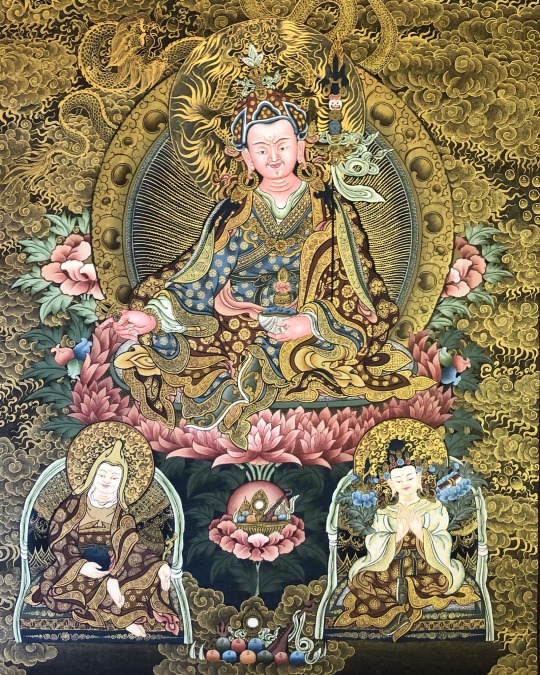
In Tibetan Buddhism, Padmasambhava is the most prominent figure, perhaps more important than lord Buddha. Padmasambhava’s great achievement lies in laying the foundation of lamaism in Tibet that a time when Tibetan religion was dominated by Bon, the doctrine of which is said to be impregnated with animism. Shamanism and demonaltry. It is because of the fresh foundation of lamaism that Padmasambhava was hailed as great liberator of Tibet.
#secondbuddha #tantrik #buddhism #vajrayana #padmasambhava #lamaism #guru #rinpoche #lotusborn #lamathankapaintingschool #thangka #omahahum #thankapainting #himalayan #art
4 notes
·
View notes
Text
Tibetan Buddhism
Tibetan Buddhism is one of the popular series of Mahayana Buddhism. It is widely practiced in Tibet, Mongolia, Tuva, Bhutan, Kalmykia, and certain Himalayan regions of Nepal and India. Tibetan Buddhism is the body of Buddhist religious doctrines. Tibetan Buddhism is also known as Lamaism and is the form of Mahayana Buddhism. It is believed to have been developed in the 7th Century CE. Tibetan Buddhism is declared as the state religion of Bhutan. The Tibetan Buddhist tradition is gaining popularity in many western countries. Read more at: Study of Tibetan Buddhism | Original Buddhas
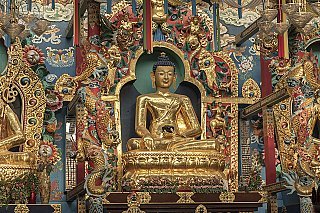
1 note
·
View note
Text
Sonam Gyatso demanded that the Mongol emperor mercilessly annihilate shamanism in Mongolia. The spiritually independent shamans were an inconvenience to an organized state religion, so they were viciously persecuted. Thousands of shamans and their supporters were deported, dishonored, marginalized (by incorporating them into a lineage of Lamaist tulkus, or masters), imprisoned, and/or put to death. This occurred in both Mongolia and Tibet. The Mongolian populace converted to Lamaism in mass numbers to avoid the slaughter. The Asian Art Museum of San Francisco in 1995 exhibited a Buddhist painting depicting a Mongol shaman being burned to death while lamas calmly look on.
In a most curious twist of history, the very system of recognizing reborn lamas, which almost destroyed shamanism in Mongolia and Tibet, may have originated among shamans in Mongolia. The British writer Peter Kingsley convincingly proposes that recognition of reincarnated shamans significantly predates Buddhist influence, using the very same recognition tests such as a candidate correctly selecting the shamanic implements they had used in their previous incarnation.
Dmitry Ermakov also concludes that gifted, powerful shamans of the zaarin rank reincarnated, and were identified by means of the clan tamga (seal) or a swastika (which, as most students of religion know, is a holy symbol in Asia). This symbol was branded onto the corpse of a deceased shaman. If a child born later showed birthmarks in a similar form, a shaman might test the child to see whether it could identify her or his previous shamanic implements. This was a major event for a clan, and one of the ways lineages were maintained. Though reincarnation was an integral part of Hindu and Buddhist belief systems, the Tibetan reincarnated-lama system did not originate in India...
The struggle between shamanism and Lamaism was by no means an easy one. Warring factions supporting different shamanic traditions railed against a variety of Lamaist schools, and vice-versa, all competing for political and social power. In the countryside, far from the centers of civilization, most local shamans continued their practices of healing and divination for their communities uninterrupted. It was probably here—far from the Khans, the nobles, the lamas, and the priests—that Mongolian shamanic practices were most authentically preserved.
Buddhism eventually gained the upper hand, and subsumed shamanism to a large extent, swallowing entire shamanic lineages whole by claiming that a shaman of renown was actually the reincarnation of a great lama of the past. Lamaism also appropriated great quantities of shamanic rituals into their religion, turning more and more of the public toward their colorful rituals and away from local shamans. Finally, political and Lamaist leaders declared shamanism a degenerate substratum of Buddhism.
-- Kevin Turner, Sky Shamans of Mongolia
3 notes
·
View notes
Text
Friday, 21 February 1840
8 1/4
3 20/’’
Fine morning breakfast at 10 1/4 – Professor Eversmann till 11 1/2 - Very agreeable and instructive – Says we shall get quite well avec la neige to Astrakhan – Had the Courier and George and Mr. E-[Eversmann] explained about the route direct from Bolgary to Simbirsk – He has only one copy of his Voyage to Bochara but it can be bought at St. Petersburg –
Mr. Turnerelli came soon after 12, but the Terenin Vassok did not come till 12 25/’’ – Off in it immediately to the Térenins (Mr. Turnerelli followed on foot) – went upstairs for a moment – Several ladies and gents[gentlemen] all ready to go off immediately to the Mosque – Found 3 ladies already there and counting those who seemed well known to our party we were 8 ladies and 10 gents[gentlemen] and 2 livery servants – Madame Terenin and her 2 sisters and Mr. T-[Terenin] and the Chef de Police and our 2 Professors and 4 others and Colonel Bechmetieff and a Mr. Krudener an intelligent young man who has served in the Caucasus and knows the Tartars and their customs –
Paganism prohibited in Russia but a few Tchonasses (about 300 men) still by stealth offer their sacrifice in the woods and get drunk for 3 days or as long as their beer lasts at the fête of St. John, as the pagans Fins do – Same worship – like the old goths – Not Lamaism –
At the Mosque at 12 40/’’ for 1/4 hour or 20 minutes we had arrived just before the Imaeem (priest) began to pray – Same service, of course, as at Moscow and there we saw it from 1st to last or we should have known little from what we saw today – Largeish mosque – Some neat plaster work inside about the windows and in the ceiling – There might be from 100 to 150 men and boys; and we were a talking addition of 20 – Kasembek said the prayers being in Arabic were as little understood by the Tartar people as the Latin prayers by the Roman Catholics – The putting the hands to the ears is as if to hide eyes, and stop up ears, to shew that they are meditating and insensible to all around – They really seemed very devout and not disturbed by the talking of our party – K-[Kasembek] said it was merely a religion of the exterior from the Mosque -
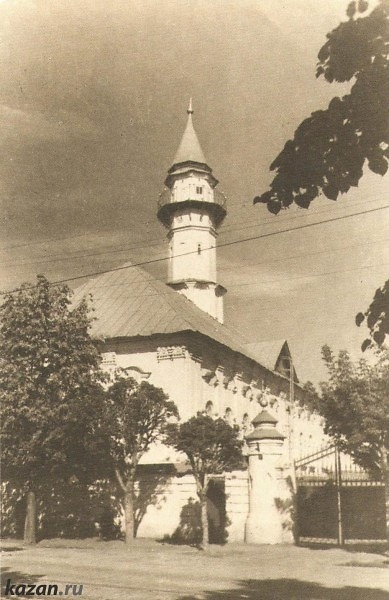
The Märcani Mosque in Kazan (image c. 1940s).
Adjourned to the house of the Tartar honey merchant …….not the richest here, but very good and much respected and rich – 4 wives – Only saw one son, a nice enough boy of about 7 or 8? Three tables groaned under different species of pastry and confectionary – Then a regular Tartar dinner – A pilau (pilaf) of rice and little bits of meat – Roast mutton – Ditto dindon in morceaux (tho’ the Tartars never cut anything up, eat with their fingers) – Cold fish &c. &c. &c. –
After this the ladies were shewn into the Harem – The 4 wives – And a daughter and niece or two, and 2 or 3 women servants about 12 altogether – Nicely dressed in brocade and ornamented with pearls, tourquoises, even diamonds – A stupid looking set – The youngest wife rather pretty – Rouged cheeks, and blackened teeth – Little Turnerelli was allowed to come in but no other man – At first the women were for running away, but they were soon reassured and even looked at the little man – Poor things! So many human beings – Human animals! – Except an Asylum for Insanes I have never seen any sight so melancholy and so humiliating as this Harem – Speaking of the Tartar and Persian women to Professor E-[Eversmann] the day we called on his wife, he observed ‘Elles ne sont pas de la Société’ – They are not admitted or capable of being admitted into Society – How terrible this degradation of one half of mankind!
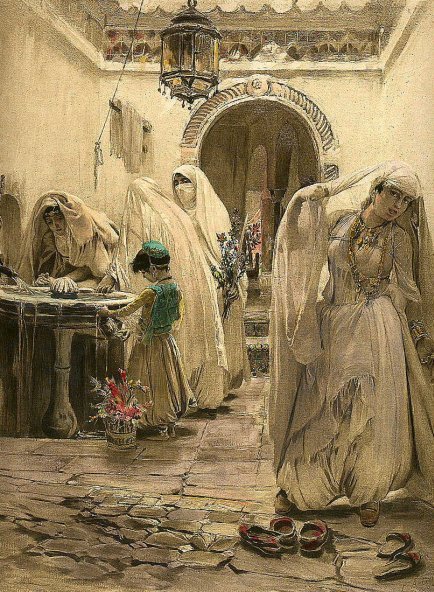
“Harem Fountain” by Frederick Arthur Bridgman.
We dispersed at 2 1/2 on leaving Monsieur Le Tatar, a very civil nice clean-looking about 60? man – Very civil – Drank our health and happy voyage and the health of our Queen and of England – I returned the health of the Tartars and the Russian Imperial Family – Mr. K-[Kasembek] our Persian accompanied us (in his Traineau?) to the Observatory – Locked – The professors wife buried on Monday – Could not see it – Saw the collection of medals arranged in armoires on dark green ledges reared against the back – Asiatic and Russian coins and medals of which we could not judge the value – The principal part of the collection modern – Some time in the Library (the medal-room adjoins it) 2 Étages of Gallery round the top – 30,000 volumes said K-[Kasembek] they have all the leading English periodicals Quarterly and Edinburgh Reviews – But the Edinburgh the one K-[Kasembek] seemed to prefer – All books defendu or not received by the University but 2 months en retard –
It was 2 55/’’ when we thanked and took leave of our good aimable Kasembek – Then drove to the General Governor’s – Not at home – Left P.[Pour]P.[Prendre]C.[Congé] cards – Ditto ditto ditto chez les Térénin but he came up while we were at the door, and took our P.[Pour]P.[Prendre]C.[Congé] cards himself – Very civil – Then left our cards chez les Moussin Pouchkine (they not at home) – Madame E-[Eversmann] excused us last night leaving cards chez elle – Everybody very civil and hospitable and have done their best and enough to make our séjour à Kazan agréable –
Home at 3 1/4 – Madame de Lapteff’s carriage and 4 at the door had been in waiting ever since 2 p.m. took it to the Gastinoi Dvor (bought tea and bougiees) and then a little détour, and gave the footman as usual (each after each time) a blue note = 5/- and came in at 4 1/2 – Then busy packing – Had George – The Kibitkas were to have been here at 2 p.m. – Not ready – Promised at 9 a.m. tomorrow – Nous verrons –
At accounts a little till Madame de Lapteff came at 7 1/4 – Tea, and sat with us till 9 1/2 – Very agreeable person – Gave us a letter to Countess Warantzoff, and another to a Mr. Spask? (I have put up the letters and cannot turn to the name) at Odessa – Then the tea things having remained began again and sat talking and tea drinking till 11 – Then till now 2 1/4 tonight wrote the last 19 lines of p.[page] 32 and all but the first 6 lines of p.[page] 33 and the whole of the last p.[page] and so far of this – I must arrange some better observation in Kazan when I have more time – I must copy my pencil notes of Tuesday (vide p.[page] 30) by and by –
The botanic garden is Southwest of the Town leaving Boutirka on the left as one goes from here – an Orangerie, but nothing to be seen at this time of year – We have had no time to see one of the 5 Tatar schools mentioned by Kupffer – Toilette and Société are not good for laborious research – We have not seen Mr. Emeritus Fuchs – He is about the age of Fischer of Moscow – 70 passé? Eversmann is surely the most distinguished Professor of the set – The Curator has offered to buy his collection for the University (as he the Curator himself told me last night) and will probably agree for it by allowing E-[Eversmann] to have it for his life – E-[Eversmann] said this morning he should not like to part with it during his life –
Very fine day – 20º of cold this morning said Madame L-[Lapteff] not more than 15º if so much at noon – They say here the climate is less severe than that of Moscow! – Very fine day – ‘Tis now 2 1/2 tonight –
[symbols in the margin of the page:] + ✓c ✓c
[in the margin of the page:] put forward my Arnold watch (before breakfast) exactly 4 hours and it still 1/4 too late by the clocks of the house
Page References: SH:7/ML/E/24/0019 and SH:7/ML/E/24/0020
6 notes
·
View notes
Photo

Hot Hell #3 from The Buddhism of Tibet or Lamaism : with its mystic cults, symbolism and mythology, and in its relation to Indian Buddhism, Internet Archive
8 notes
·
View notes


